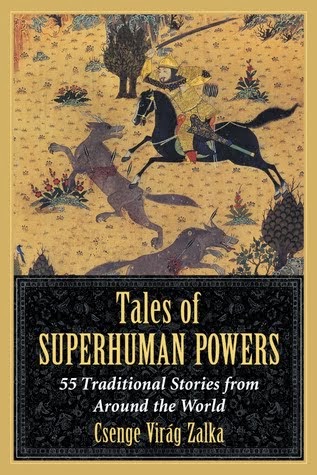Today is World Storytelling Day. And also, very fittingly, the birthday of my paternal grandfather, Zalka Ottó. He would have been 86 years old. He passed away on January 7th this year.
I have mentioned him often in interviews, books, and on social media. He was the great storyteller of my family, personally responsible for me becoming a professional one (he was never paid for his stories, although many people would have given him cash to shut up every once in a while). His funeral was well attended, but the wake ended up short, before we could bring out the stories about him. To me, storytelling is an integral part of mourning a loved one. They live on with us through their stories. And luckily, I have many about Grandpa Ottó. Not only from memory, but also in recording. In the past decade, he had more than one health scare (as the family saying goes, he died twice but survived both). After the first one, I started recording his stories and recollections on my phone.
Grandpa was always telling stories. Tales, anecdotes, memories. He was a real life trickster, always up for a joke and a prank. When I was a kid, my two cousins and I spent weeks at my grandparents', and grandpa was always in charge of our entertainment. In the evenings, when they managed to wrangle us into bed (after drinking, peeing, drinking again, etc.), grandpa told us endless bedtime stories. As an adult, whenever I visited, we were always talking, always chatting. Grandpa could make a story about anything, from last week's meeting of the Gardening Club all the way to his own childhood, or embarrassing things about the neighboring village. Sometimes he even told folktales - always dressing them up as if they had happened just around the corner. I remember when I first read Baron Munchhausen tales, I felt greatly offended that someone had stolen my grandfather's true stories... Since then, I have encountered many of those "true stories" in various places, including the Irish folklore archives and a Nasreddin hodja folktale collection. Trickster tales travel well. And real life tricksters keep them alive.
Here are some stories about Grandpa Ottó. About him, for now. I'll break our the actual tales later on.
1. It was impossible to upset grandpa. Three children close in age can do some serious damage to a household and a garden: we broke a cherry tree in half by climbing it, we fed green walnuts to the pigs, we made a mud bath in the vegetable patch. We often took Grandpa by surprise, but he always laughed about it. I don't remember him ever snapping or yelling at us for anything.
2. Children had free reign of the gardens. We could eat any fruit or vegetable, climb any tree, use anything for our games. He actively helped us with the latter: he taught us how to make horns from squash leafs, whistles from elder branches, bow and arrows from reeds, and... how to impale a potato on a sharpened stick and then fling it very far. Yep, not all our activities were child safe, to say the least, but we mostly got away unharmed. (My dad, on the other hand, managed to hit my mom with a corn cob arrow once. They have divorced since.) My husband, who works at a kindergarten, paled a little when I told him that I spent autumn days as a child sitting on a porch with a basket of chestnuts, a drill, a knife, and a box of matches, making little figurines...
3. Grandpa practiced the wisdom of Tom Sawyer, and liked to trick people into doing tasks for him by making them seem very exciting. Those people were usually us children. He would take us to the cucumber sorting machine, and we spent hours hauling cucumbers onto the conveyor belt and then squealing excitedly as we watched them fall. He also bestowed on us the privilege of accompanying him to weighing raspberries, or organizing raspberry picking contests about who got the most full buckets. (My grandparent sold produce on the side.) My favorite, however, was the time when he convinced us that you could find dinosaur bones in the backyard. There were indeed bone fragments there, from pigs long past, and as a result we dug a whole new vegetable cellar for him.
4. When I was a kid my grandparents had pigs, chickens, and ducks. The chickens gave a lot of eggs, supplying the whole family. Grandpa had a story about the secret of the abundance, and he happily told it to anyone: He claimed that all you have to do is when a hen lays an egg, you have to snatch it up quickly. The hen looks back, sees no egg, and quickly lays another one... We always wanted to try this trick, which is why it was usually our task to crawl into the chicken coop and gather all the eggs. He also told us that he fed the chickens with beets before Easter, and got red eggs. We believed him.
5. Our grandparents' garden shares a fence with a castle on one side, and a nursery school on the other. Whenever grandpa worked in the garden, the nursery kids would run to the fence and yell his name. He goofed off for hours for them. He told Snow White often, and lined up the kids, telling them they were the Dwarfs, and naming each one from Grumpy to Bashful. Once a father complained angrily that the neighbor was calling his kid dopey... Grandpa had some explaining to do.
6. There were three basic rules for us kids: 1. "Kids are allowed everything." 2. "A kid should eat ten pounds of dirt a year." (But not at once, my poor mom pleaded.) 3. "Grandpa doesn't only look, he also sees things." It was true, he was a good observer, and taught us the same.
7. He was also good at math, and liked puzzles. Till the end, he loved to do his daily crosswords. Once, we were on a bus with him and he overheard some teens struggling with their math homework. By the time we got to our stop, he patiently and kindly explained it to them. (Anyone who tried patiently and kindly explain math to teens knows this is a memorable feat.)
8. One of the central characters of grandpa's storytelling repertoire was a man named Szabó István of Sokorópátka, the stereotypical dumb and vain local politician. There were many stories about his stupidity (and some where he was actually witty). Grandpa told the same stories to my dad and aunt when they were kids, and the whole family kind of believed he'd made them all up. Until one day my aunt walked into an exhibit, and there he was, Szabó István of Sokorópátka, a real historical figure! (Wit a Wikipedia page.) Whether he was really that dumb or not... that's another story.
9. Grandpa was also not above making a fool out of himself for our entertainment. Once we took a hike and came across a boat on a small lake. We all had to get in the boat, and then get out - but Grandpa, leaving last, tripped, and fell dramatically into the water. He walked, dripping, all the way home, and we laughed until we cried. I only realized much later that he probably did it on purpose. Similarly, whenever we were stung by nettles, Grandpa always made a show of explaining how it is very healthy, and then rubbing his arms and legs with nettles all over. It seemed liked the coolest thing at the time.
10. It was one of Grandpa's personal stories that back in his soldier days a sergeant decided to order all recruits to paint the sky. One by one they stepped forward, received the order, and decided it was impossible. When Zalka Ottó came up, he stepped forward, saluted, and asked the sergeant what color he wanted. I think this says a lot about him in itself...
Bonus: Grandpa often told us that when he died he wanted to be buried with his teeth in a bag around his neck. So that when an archaeologist finds him in a hundred years, they would be surprised to see a man who had all his teeth inside his chest. As an archaeologist, I appreciated the thought, although we did not end up complying with it.
Archaeology, on the other hand, brings me to paraphrase my favorite Roman epitaph.
He has died many times, but never quite like this.
I hope you are well in the world above.














